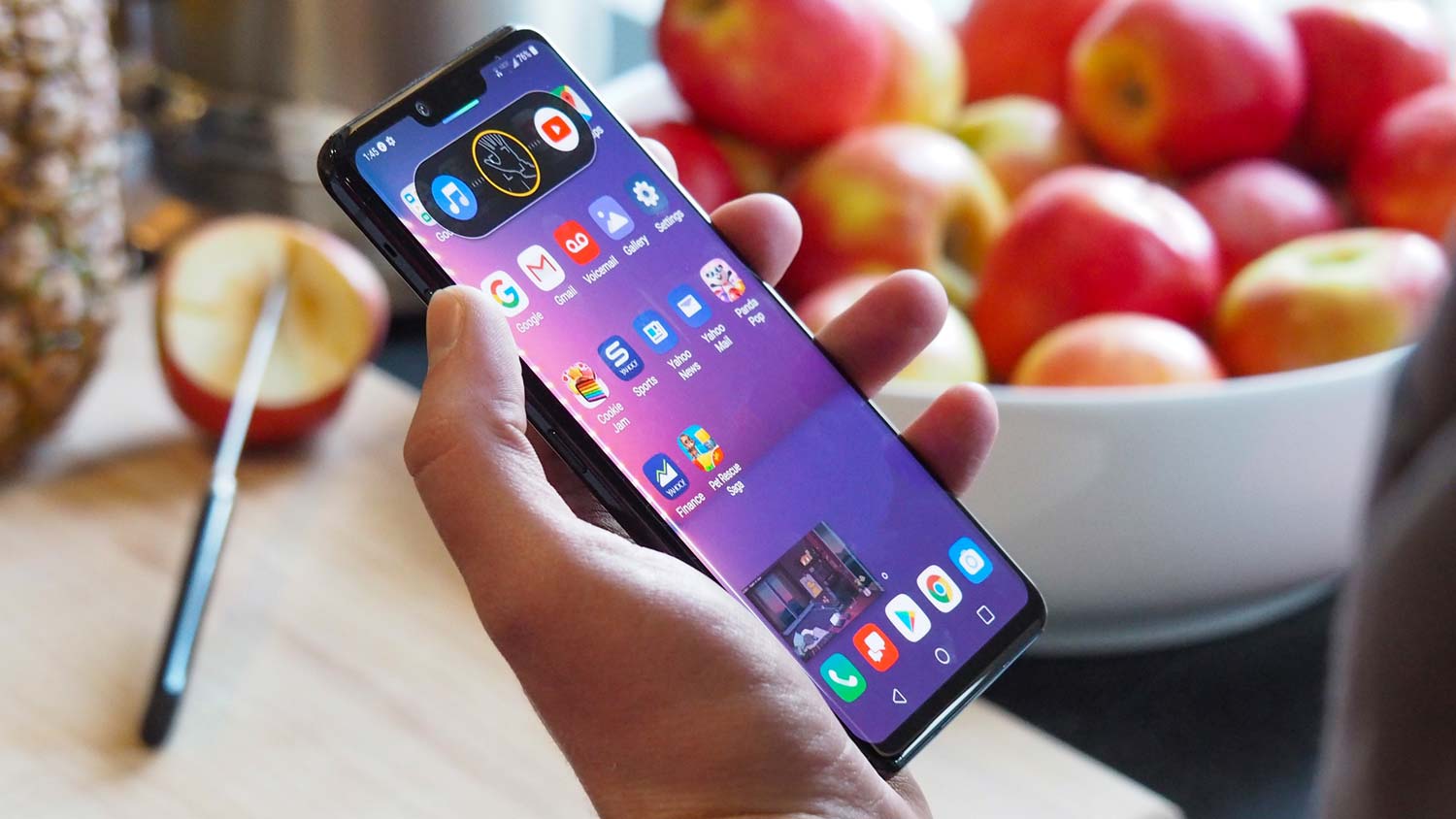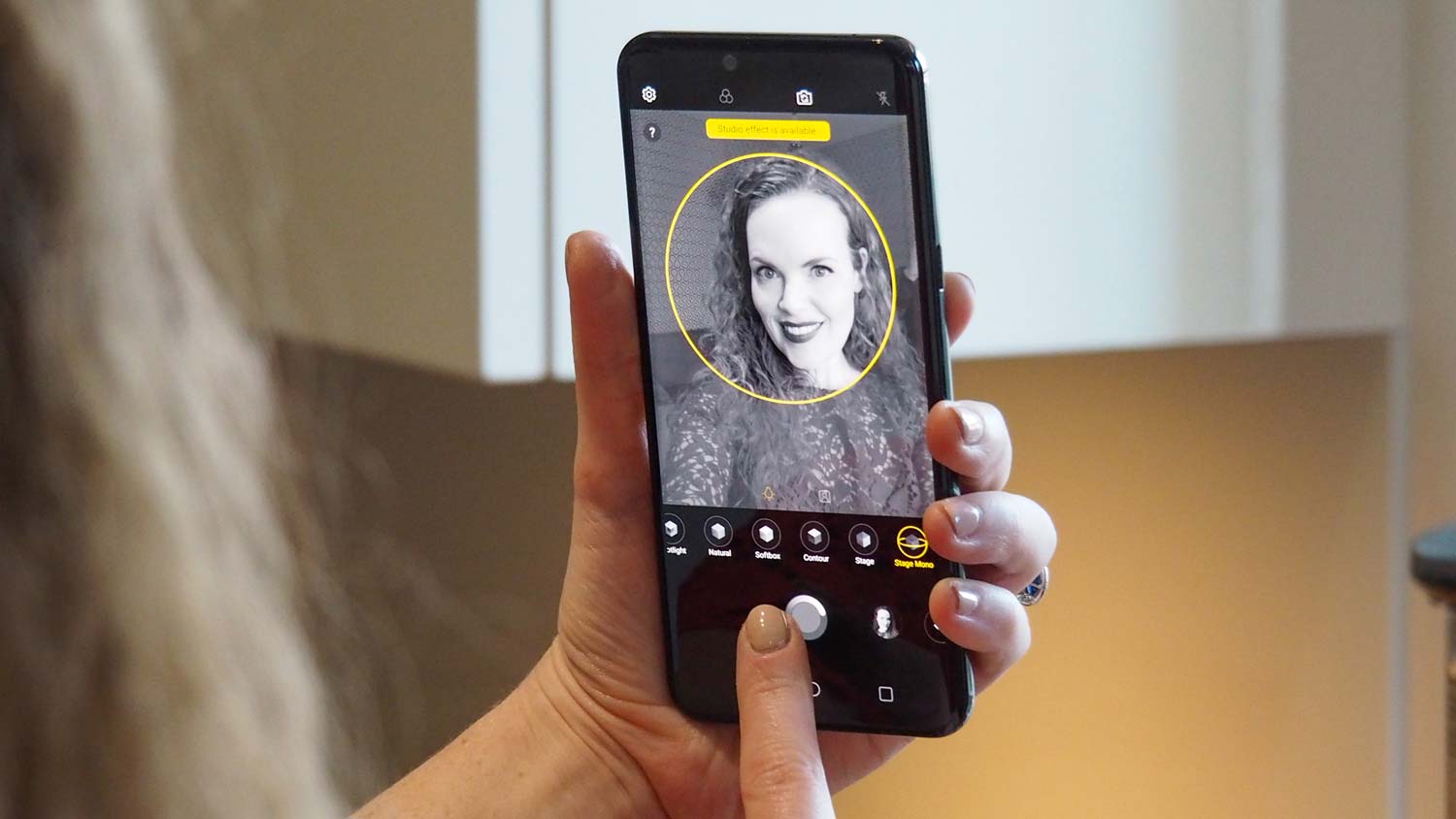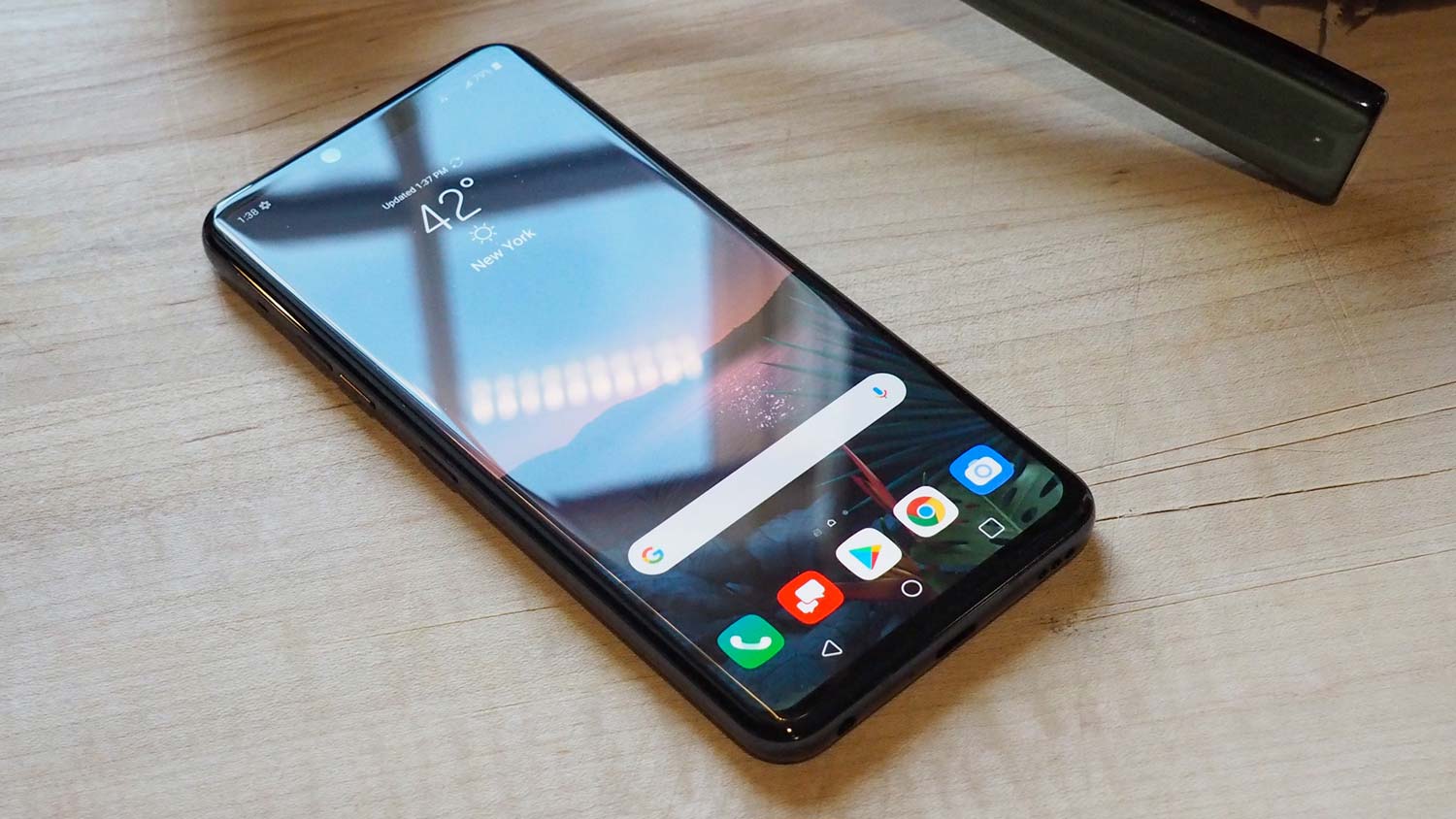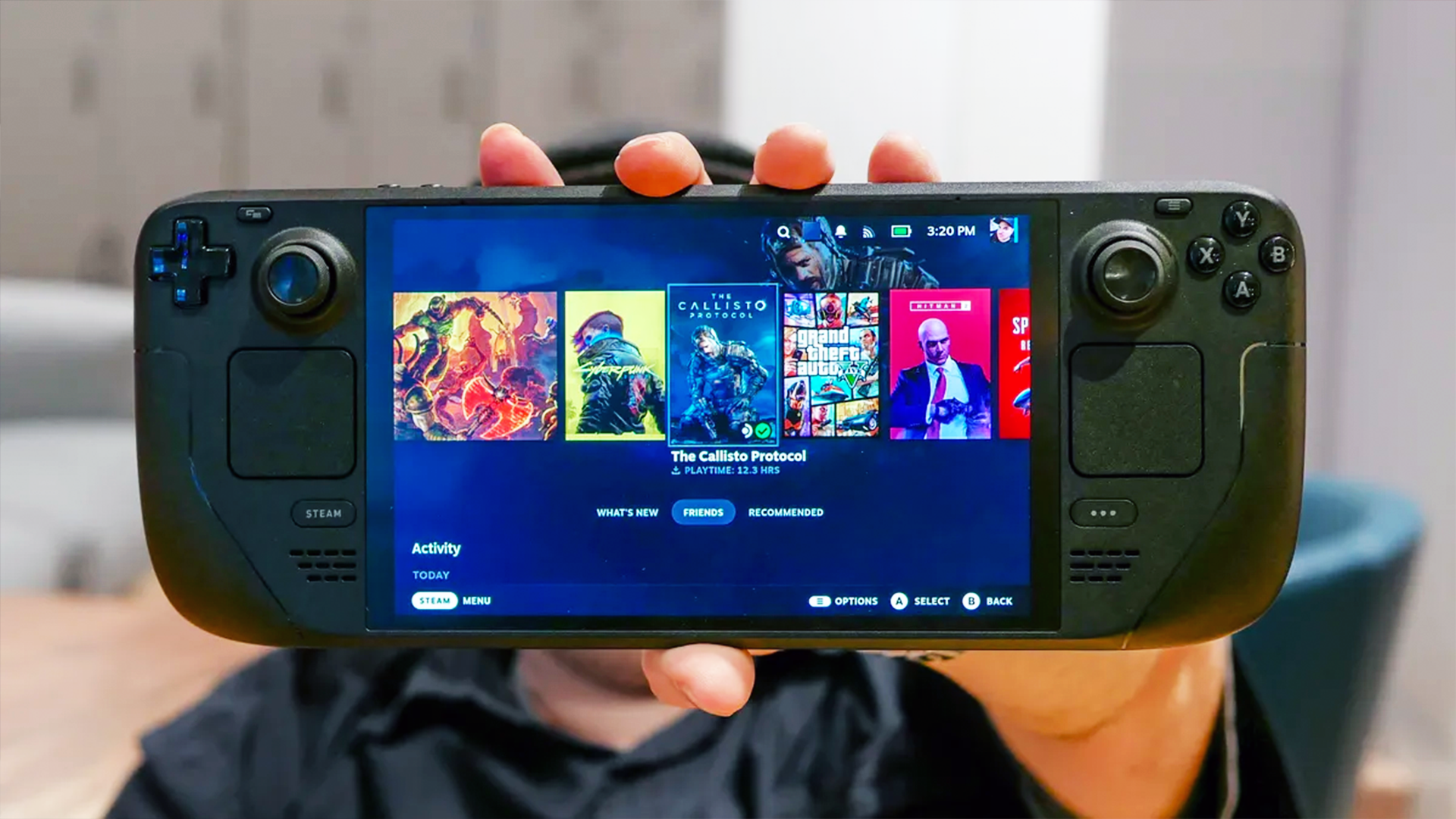LG G8 ThinQ Hands-On: A Game-Changing Smartphone, When It Works
The LG G8 ThinQ doesn’t look like a revelation, but has two revolutionary new features.
Editors' Note: Updated March 28 with pricing and availability information announced after the LG G8's debut on Feb. 24 at Mobile World Congress.
BARCELONA — LG didn’t reinvent the display with its new G8 ThinQ the way Samsung did with the Galaxy S10. But it added something that could be an even bigger deal for smartphones — a gesture-driven interface that recognizes your hand movements.
Or it could be a big deal, if it works.

LG has added the ThinQ moniker to its smartphone names in recent years to imply that its devices are a little smarter than the average phone (and to fit in with LG’s ThinQ lineup of smart appliances). But LG’s smart features have always felt a little more gimmicky than high-end, which could be why the company’s flagships haven’t been as popular as those from Apple, Samsung or Google.
MORE: Here Are the 10 Best Phones Available
The G8 ThinQ’s Hand ID and Air Motion features sound revelatory on paper, but after spending some time with the phone, I’m not convinced. Yet.
Price and Availability
Get instant access to breaking news, the hottest reviews, great deals and helpful tips.
The LG G8 arrives at Verizon on April 11, with other carriers offering the phone the very next day (April 12). LG lists a price of $820 for the G8, but that price varies based on which carrier you order from.
T-Mobile, for example, is knocking $200 off the price of the phone, selling the LG G8 for $620. It costs more at other carriers — $830 at AT&T, $840 at Sprint and Verizon — but those companies are providing deals that can help bring the cost down if you qualify.
MORE: LG G8 Deals: Where to Buy LG's New Phone
Pre-orders for the LG G8 ThinQ begin March 29 at AT&T and Sprint. Verizon starts taking orders April 1, while T-Mobile follows suit on April 5.
LG G8 ThinQ Specs
| LG G8 ThinQ | |
| Price | $820 |
| Display (Resolution) | 6.1-inch OLED quad-HD+ (3120 x 1440) |
| CPU | Snapdragon 855 |
| RAM | 6GB |
| Storage | 128GB |
| microSD | Yes, up to 2TB |
| Rear Cameras | 12-MP standard (f/1.5), 16-MP wide-angle (f/1.9) |
| Front Camera | 8-MP (f/1.7) Z Camera with Infineon time-of-flight sensor |
| Battery | 3,500 mAh |
| Size | 5.98 x 2.83 x 0.33 inches |
| Weight | 5.96 ounces |
| Colors | Black, silver, red |
Hand ID and Air Motion: Next-generation gestures
LG turned the G8’s 8-megapixel front-facing lens into what the company calls a Z Camera, which has a new time-of-flight sensor. That sensor, from Infineon, unlocks a brand new world of capabilities.

The Z Camera enables 3D facial recognition, which is more secure than a two-dimensional photo of your face. But the camera has an entirely brand new biometric security feature that I haven’t seen anywhere else — vein pattern recognition. The G8’s Z Camera uses a laser to bounce off the hemoglobin in your veins, which it then uses to unlock your phone. (Yes, it’s as wild as it sounds.) It calls the new biometric scan Hand ID.
Hand ID also enables a new gesture-driven interface, Air Motion, which recognizes your hand movements and uses them to control the device. Instead of touching the display, you can use hand motions to turn up the volume on your favorite song, skip tracks, take screenshots and other shortcuts. Those motions are customizable in the G8’s Settings, so you can assign gestures in specific apps.

Unfortunately, in my hands-on time with the G8 ThinQ, Hand ID and Air Motion were more finicky than useful. The vein recognition works best when your hand is curled in a claw rather than flat above the sensor, which is not at all intuitive. Figuring out Air Motion takes some time, because you have to find the right distance between your hand and the front-facing camera to activate it. You also have to wait a few seconds before the G8 senses you want to control the device with gestures. In that time I could’ve just touched the display and finished the task.
Consider fingerprint scanning or facial recognition: You don’t have to hold the phone at a precise angle to unlock it, because that’s not convenient. If Hand ID and Air Motion worked reliably every time, the G8 would be a winner. No other smartphone maker is pushing the boundaries like this. But maybe there’s a reason they haven’t.
Display: Crystal sound OLED
As for the look of the new phone, at first glance, the G8 ThinQ looks identical to last year’s G7 ThinQ. The 6.1-inch quad-HD+ (3120 x 1440) OLED panel has minimal bezels, save for the notch that can be disguised with a software-based bar.

But LG tucked a vibrator behind the screen to create what the company calls “crystal sound OLED,” allowing sound to radiate from the display. The G8 ThinQ ditched the conventional phone receiver for this OLED tech, which LG also uses in its high-end TVs. The G8 still sports a bottom boombox speaker, which LG introduced in the G7. The speaker effectively fills a room with music — I tested it by blasting the new Ariana Grande album. (Five stars, highly recommend — the album, I mean.)

But the crystal sound OLED is designed more for phone calls than for music. The vibrating display functions similarly to bone conduction, so you don’t have to press the G8 directly to your ear to hear someone speak. My colleague Adam Ismail took a call from me on the G8 and said my voice came in loud and clear, regardless of where he held the device.
Cameras: Same dual-lens, new Night View
The G8 sports a dual-lens array on its back, including one 16-megapixel wide-angle lens with 107-degree field-of-view and a standard 12-MP lens. The two lenses are the same as you’ll find in LG’s V40 ThinQ, but that device had a third telephoto lens that the G8 lacks.

LG has packed new photography features in the G8, including a Night View mode that captures 10 images and combines them into one to reduce noise in low-light images. I didn’t get a chance to try this tool, but I hope it achieves a higher-res result than the G7 ThinQ’s low-light solution, which uses pixel-binning to brighten a dark image but adds unnecessary noise in the process of lightening a photo.
Portrait mode is now standard on every smartphone camera, but LG is bringing the effect to the G8’s videos. You can select any object in the shot to focus on as you’re shooting, and you can also adjust that with a slider tool as you record the video.
The front-facing Z Camera uses its depth-sensing capabilities to take better selfies, because it can 3D map the subject and the background behind it. I tried a new studio lighting portrait effect, which is fine, but I wish the camera were better at blurring the edges around my curls.

Like the G7 and V40, the G8 uses AI to detect what you’re shooting and optimize the camera settings to create the best shot. I took a photo of the Manhattan skyline, and the G8 accurately categorized the image as city. The resulting shot of ornate buildings against the the afternoon sky perfectly captures the gradient blue of the sky and the wisps of white clouds.
Performance: Latest Snapdragon, solid RAM
We plan to put the G8 through our synthetic and real-world benchmarks, but the fact that the device runs on Qualcomm’s new Snapdragon 855 CPU almost guarantees it’ll be a powerhouse. The 855 also powers Samsung’s latest S10 lineup, and in our earliest tests, the processor’s performance nipped at the heels of Apple’s A12 Bionic chip.

The G8 will come in just one model, with 6GB of RAM and 128GB of storage, which expandable with a microSD card.
The G8 is also one of the few flagships hanging onto the headphone jack, if you care about that sort of thing. (And many, many people care.)
Outlook
The G8 ThinQ is light years ahead of its predecessor, the G7 ThinQ. But that doesn’t mean it’s perfect.
It’s unclear if LG’s innovative, gesture-driven interface will convince people that LG phones are worth buying, especially when Hand ID and Air Motion take some getting used to. Samsung has a slate of new flagships, the S10, S10 Plus and S10e, which offer a range of sizes, prices and storage options to choose from as well as a hole-punch display that looks completely different than anything else on the market right now.
Then there’s the fact that LG is readying a 5G smartphone, the V50 ThinQ, due out in the first half of this year on Sprint’s 5G network. That flagship will sport five cameras, a triple-lens array on the back and two in the front. By teasing its best phone months early, LG may have stolen the G8’s thunder.
Stay tuned for a full review of the LG G8 ThinQ.
Credits: Tom's Guide
Caitlin is a Senior editor for Gizmodo. She has also worked on Tom's Guide, Macworld, PCWorld and the Las Vegas Review-Journal. When she's not testing out the latest devices, you can find her running around the streets of Los Angeles, putting in morning miles or searching for the best tacos.
